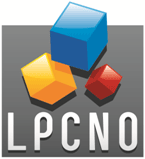Electrostatic trapping of colloidal nanoparticles: an in-situ study using microfluidic
NANOSCIENCE

Lab: LPCNO
Duration: 6 months full-time internship
Latest starting date: 01/02/2024
Localisation: Nanotech, LPCNO
INSA Toulouse
135 Avenue de Rangueil
31077 Toulouse, Cedex 4
Supervisors:
Simon RAFFY, Dr raffy@insa-toulouse.fr
Laurence RESSIER, Pr
This research master's degree project could be followed by a PhD
Work package:
Nanoparticle directed assembly onto surfaces is a key domain in nanotechnology because it allows exploiting the singular properties of patterned nano-objects (for electronics, photonics or biology: sensors, pixels array, transistors, etc.) [1]. There are several ways to control those assemblies. Among them, the Nanotech team (from LPCNO : “Laboratoire de physique et de chimie des nanoobjects”) uses electrical surface functionalization to drag and trap nanoparticles using the nanoxerography technique[2].
This electrostatic trapping coupled with a microfluidic setup allows in situ observations. This approach helps up to mature our understanding of the physical phenomena involved and optimize the process [3]. On another way, microfluidic could also be seen as a tool to propose new opportunities to nanoxerography. Controlling flows of nanoparticles dispersion over charged surfaces in microfluidic chips enables precise assemblies of multiple objects with overlapping, composition gradient, specific orientation, etc.
The nanoxerography technique is mainly electrically driven: charge patterns generate electric fields. The resulting forces are also dependent on the solvent properties and the characteristics of the nanoparticles.
Nanoxerography initiates with electret materials, which, as dielectrics able to exhibit permanent electric polarization, are adept at retaining electrostatic charges. Those electrets are stacked between patterned electrodes and currents are applied to draw charges through them. The next step is immersing electrets in colloidal dispersions to trap nanoparticles on their electrostatic patterns.
The student will work on the assembly of fluorescent nanoparticles (CdSe/CdZnS quantum nanoplatelets from NexDot company) through a microscope under a microfluidic set-up. The first idea is to perform a rigorous characterization of those electrostatic trappings. The standard models, made for polar solvents, show computational and predictive limitations when electrostatic screening is low and/or the solvent presents a small dielectric constant (dilute colloidal dispersion in organic solvent in our case) [4]. A confrontation with experimentation is therefore essential to the field.
In microfluidic, laminar flow (without turbulence) allows getting a stream of side by side miscible solutions without mixing (continuous flow or co-flow). How will interact two colloidal dispersions in direct contact through an electric field? Which physical quantities will drive it? Is it possible to play with that to create original nanoparticle assembly?
Those co-flows enable continuous solutions with varying electrostatic screening, dielectric constant, particle concentration, or composition. This will deeply affect the Debye lengths and the nanoparticle polarizabilities which will become anisotropic.
The microfluidic will be used for the fundamental study of the nanoxerography. The creation of new kinds of nanoparticle assemblies represents the technological issue of this work.
This is an experimental internship. The student will spend time in clear room condition for doing the experiments and characterizations. Depending on his/her interest, the student could also take part in the microfluidic microfabrication and the analysis of the data (using Python or other).

References:
[1] Z. Chai, A. Childress, et A. A. Busnaina, « Directed Assembly of Nanomaterials for Making Nanoscale Devices and Structures: Mechanisms and Applications », ACS Nano, vol. 16, no 11, p. 17641‑17686, nov. 2022, doi: 10.1021/acsnano.2c07910.
[2] E. Palleau et L. Ressier, « Combinatorial Particle Patterning by Nanoxerography », Adv. Funct. Mater., vol. 28, no 30, p. 1801075, juill. 2018, doi: 10.1002/adfm.201801075.
[3] C. Midelet et al., « On the in situ 3D electrostatic directed assembly of CdSe/CdZnS colloidal quantum nanoplatelets towards display applications », J. Colloid Interface Sci., vol. 630, p. 924‑933, janv. 2023, doi: 10.1016/j.jcis.2022.10.011.
[4] W. Cao, M. Chern, A. M. Dennis, et K. A. Brown, « Measuring Nanoparticle Polarizability Using Fluorescence Microscopy », Nano Lett., vol. 19, no 8, p. 5762‑5768, août 2019, doi: 10.1021/acs.nanolett.9b02402.
Areas of expertise:
Microfluidic, Nanoxerography, Microfabrication, Electrostatic, Analytic
Required skills for the internship:
Background in materials science or colloidal physics. Electrostatic and hydrodynamic knowledge are a plus.
